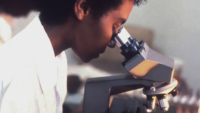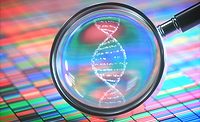Whole-Genome Sequencing May Be Hot, But Which Rapid Micro Method Won’t Leave You Burned?

Can you tell which technology—whole-genome sequencing (WGS) or DNA fingerprinting—is better from these examples?
• In Denmark, previous investigations into whether Listeria monocytogenes was in food samples were inconclusive until WGS discovered an L. mono isolate from a single sample. WGS was also able to simultaneously search for other pathogens like Salmonella.
• A U.S. ready-to-eat salad maker used a RiboPrinter® DNA fingerprinting method to confirm the company’s greatest fear: a widespread Salmonella infection, as indicated by more traditional techniques. But DNA fingerprinting ruled out the pathogen, instead finding evidence of Citrobacter freundii, a nonpathogenic relative known for mimicking its more dangerous cousin.
The answer: Both are equally powerful techniques. Both have advantages and disadvantages. And you have realistic choices for maintaining food safety.
WGS has been considered the ultimate test for determining the genetic identification, makeup and even function of a living organism. Because it can point to every base pair in a length of DNA, its promise is to present every part of the genome for analysis. But this promise has been elusive; because our knowledge of what every base pair of DNA does remains imperfect, the cost of this procedure is still beyond most labs, and few genomes are mapped this precisely. Because of these limitations, WGS has been useful for widespread epidemiology studies by larger public health agencies but hasn’t been as quickly adopted in food safety.
However, the U.S. Food and Drug Administration (FDA) and the U.S. Department of Agriculture (USDA) Food Safety and Inspection Service have begun using WGS in their own labs to “perform foodborne pathogen identification during foodborne illness outbreaks” and “identify pathogens isolated from food or environmental samples,” as FDA explains on its website.
So far, no U.S. agency has requested that firms adopt WGS, but they do encourage firms to use some microbial analysis method that can rapidly identify the genomic background of a potential foodborne pathogen. “The FDA is a strong believer in whole-genome sequencing as a method to identify resident organisms,” says Jenny Scott, FDA senior advisor at the Center for Food Safety and Applied Nutrition. “We encourage facilities to use one of the analytical techniques available to identify resident strains.”
The Food and Agriculture Organization of the United Nations (FAO), meanwhile, also advocates WGS but acknowledges the challenges to adoption: “While WGS can significantly contribute to improving food safety management, it still relies on the appropriate interpretation of laboratory data in the context of epidemiological evidence; WGS alone will not suffice.”
Manufacturers, processors and other food industry operations are looking more at various analytical techniques but not necessarily WGS. A recent poll showed that 93 percent of responding companies said they would not be using WGS. One reason for this reluctance is cost, and another is the expertise needed not only to run the sequencing test but also to analyze the data, using current bioinformatics techniques. A third reason is that WGS may be too successful at identification. Any data uncovered would be legally discoverable and reportable to FDA, whether they ultimately end up pointing to a pathogen or not.
What Alternatives Are Available?
Pulsed-field gel electrophoresis (PFGE) is mentioned frequently in FDA and USDA literature, but the technique doesn’t always discriminate some strains of bacteria like Salmonella species. Another technique is DNA fingerprinting, using ribosomal RNA (rRNA) fragments to make a precise determination of gene sequences that can identify organisms down to the strain level. Instruments like Hygiena’s RiboPrinter system are based on applying 16S, 5S and 23S rRNA sequences and flanking areas to modern electrophoresis separations to identify (and rule out) pathogens.
DNA fingerprinting and PFGE are similar techniques: They involve physical digestion of DNA, separation of fragments via gel electrophoresis and comparisons with a larger database. The RiboPrinter targets a smaller section of the genome than PFGE, but PFGE techniques are highly manual and time-consuming. This opens the window to error and less reproducibility.
Non-WGS techniques can be included under FDA’s and FAO’s advice for other molecular techniques. These techniques may also more easily apply themselves to more facilities and work environments, because they are easier to use and don’t require advanced training in sample preparation, operations and bioinformatics-based data analysis. The use of such advanced techniques is a welcome advance in food safety, but not every site is going to fit into the WGS basket. And the good news is that so far, there are options.
www.hygiena.com
Looking for a reprint of this article?
From high-res PDFs to custom plaques, order your copy today!






